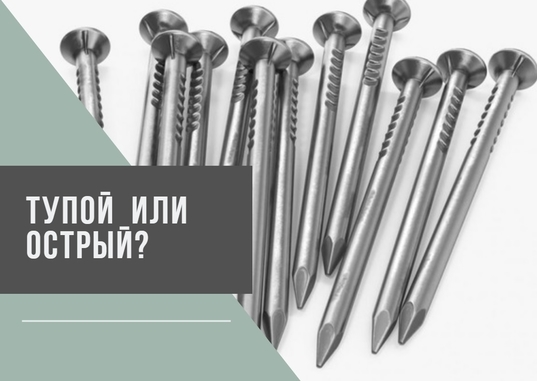Проектная работа "Проблемы бездомных животных"
В работе рассмотрены проблемы бездомных животных
Скачать:
| Вложение | Размер |
|---|---|
| 77 КБ | |
| 26.5 КБ |
Предварительный просмотр:
Городская научно – социальная программа
«Шаг в будущее, Электросталь»
МОУ «СОШ № 19»
автор: ученица 10 «Б» класса
Баталина Наталья
руководитель: учитель
английского языка Сидорова Е.В.
Электросталь
2007 год.
Content.
Introduction.
- Near to the prehistoric person.
1.1. Classification of breeds.
- The science phelinology is engaged in studying of cats.
- General information about illnesses.
- Dialogue between people and animals.
Conclusion.
Literature.
Introduction.
The most ancient animal tamed and cultivated by the person. Since old years is a subject of dispute, whether there is all variety of modern breeds from one ancestor (the overwhelming majority of researchers count those the wolf), or it is result of crossing of wolves, jackals and even foxes. The majority of cynologists count a wolf as a unique ancestor of a dog (Charles Darwin’s opinion), and all modern breeds – a result of artificial selection.
Conrad Lorenz has propounded a theory about an origin of different kinds of dogs from wolves and from jackals independently, emphasizing diametrical distinctions between their characters and habits.
There is also a point of view, according to which the ancestor of a domestic dog is certain independent (which is missed nowadays) wild «ancient dog», the relative of wolves and jackals. So Charles Linney also considered that. This hypothesis proves to be true with the newest researches geneticists.
1. Near to the prehistoric person.
The taming of dogs carries to Mesolithic period (10-15 thousand years AC). Studying of mineral remains of the ancient dogs began in 1862 when in Switzerland skulls of the Neolithic period have been found. In special literature this dog is called «a peat dog» (sometimes – «a pile dog»). Then the remains of a peat dog were found in Europe everywhere (for example, Ladoga Lake, in Egypt etc.). The peat dog was the constant form during all Stone Age; its remains were found even in adjournment of the Roman epoch near modern German city Mainz. The direct descendant of a peat dog considers to be spitz-like dog of Lapps.
A dog from Ladoga Lake, which is larger, than a typical peat dog, refers to ancestors of mastiff-like dogs, and sometimes to ancestors of kidskin.
In Bronze age (4500 AC); there were five basic types of dogs: mastiff, wolf-like dogs, greyhounds, pointer-looking dogs and the shepherd's dogs.
On the tombs’ images in Ancient Egypt there is often a Pharaoh’s dog that has carried all typical features of breed through millennia. The dog, as well as many other animals in Egypt, was idolized. In connection with a death of a dog in the Egyptian houses, under certificate of Herodotus, there was mourning, and the owner of a house shaved off his hair. Corpses of dogs were mummified, but these mummies nevertheless were rather rare, smaller than cats.
In other countries of the Ancient East, for example in Assyria, images of huge mastiffs, used for hunting and as fighting dogs, were found. For example, on such relief in an environment of mastiff the great tsar Ashshurbanipal (it is kept in the British Museum) is represented.
In Ancient Greece and Rome dogs began to play much more significant role. Naturally, fighting dogs, which were mighty and fearless, used to be in special demand. In the army of Alexander the Great they took a place of honor. Dogs of the hunting breeds, fleet and beagles were rather appreciated too.
Well-known Moloss mastiffs, whose images meet on coins and frescos, have given rise to many modern breeds.
In a lot of human communities dogs reared mainly for the culinary purposes (in cultures of aborigine of Oceania, Southeast Asia).
1.1. Classification of breeds.
The first cultivated dogs, most likely, were both watchmen, and assistants in hunting. Then there was a division of dogs into groups depending on their economic purpose (assignment). Firstly there were hunting and watch dogs, later - decorative dogs that were not demanded any service. Such classification of breeds of dogs is significant conditional. With the development of a human society the application of some breeds of dogs has radically changed. To the greatest degree it concerns to hunting dogs that are now on the verge of disappearance, or pass in the category of domestic favourites. Many of them serve in police, in social sphere (Seeing Eye dog, etc.).
2. The science phelinology is engaged in studying of cats.
Fossil remains of cats are found in the most ancient city of our planet - Jericho (5-6 millennium AC), at excavation in Jordan, in the most ancient cities of India. But these animals were not quite domestic. Numerous certificates of cats in Egypt are well tracked since 3 millennia AC. On Sakkarakh’s tombs (2750-2650 AC) cats are represented with collars that certainly testify to their domestication. And on the well-known fresco from Bennie - Hasan the cat is already represented in the house, near the mistress.
In the temples denoted to goddess Bast (Egyptians represented her as a cat or a woman with a cat's head), there were a lot of cats honored as sacred animals. When the cat died, there was mourning in the family, all members of the household shaved off eyebrows and grieved. Corpses of cats were embalmed and buried in magnificent tombs and there was a special cemetery. Archeologists found about 300 thousand of mummies concerning by 4 millennium AC. The law was also on the side of this sacred animal: for murder of a cat a severe punishment up to death threatened.
The first hieroglyphic symbols designating words «cat» and «cat», are dated approximately 2300 AC. They are also read as «mint» and «miu». But the cat in Egypt was not only a sacred animal, but it was also a hunting and fighting animal. Cats hunted on birds and game.
In medieval Europe mentions of cats are not numerous, only approximately by the 10th century the cat ceases to be a valuable rarity.
Approximately during the same time cats appear in Russia where this animal was considered to be suitable for priories. In Europe cats down to epidemic of «black death», when their function of fighters of fine rodents (mice, rats) has been appreciated, were not popular and quite often became a victim of prejudices.
In the East cats were in exclusive position in comparison with Europe. In an Islam cats are rather esteemed, the cat Muezza lived at Prophet Mohammed. In memory of it cats were allowed to a mosque with a free admission. The cat is included into 12 animals which name is carried with the years of the Chinese calendar. In China cats and their images were considered bringing happiness. According to an ancient Persian legend, cats have appeared from a lion’s sneezing. In zoroatrizm, ancient Persians’ religion, murder of a cat is the same serious crime, as well as murder of the person. The important place was occupied with cats in the countries of Indochina. There were a lot of ancient and noble breeds: Thai, Siamese - occur from this region where they reared at royal and princely court yard. These surprising creations have been brought in Europe by builders of British Empire and gave a huge push to cultivation of cats in England.
In 1727 work of Frenchman Monkrifa «the History of cats», finally «rehabilitating» the appearance of animals. The work began in 18 centuries in Europe and first of all in England in creating the new breeds, continued and all-time amplified in 20th century when cats have strongly took the 2nd place and here and there and the first place among domestic favorites.
3. General information about illnesses.
Times have changed, and the population of many countries has a fashionable tendency to purchase exotic animals, including cats and dogs of rare breeds. Unfortunately, the majority of animals brought from the far countries are not adapted to existence in the countries of Europe and Asia. They transfer badly differences of temperatures, their immunity falls ill. All this can cause following illnesses:
1. From a homeless animal the person can catch skin disease, such as ringworm. During this disease the person’s lymphatic nodes inflame, his head, nails, skin is ill, and especially it is dangerous for children who like to play with homeless animals.
2. Homeless cats and dogs can catch fleas; they are carriers of typhus as fleas can get on people, as people can also catch these similar illnesses. With a view of hygiene it is necessary to keep up cleanliness of pets and it’s better to fear of homeless animals.
3. Furiousness. This illness arises after a sting of an infected animal, and it is characterized by defeat of the central nervous system. This disease spreads everywhere; also this disease has a very high death rate. That is why it is necessary to conduct preventive maintenance of vagrant animals. After a sting of an infected animal the inoculation is necessary, but it is very hard for the person.
4. Mites. Dogs and cats can be intermediate carriers of various hookworms. People can catch such illness as encephalitis. It is the inflammation of grey material of brain.
5. Lice. Lice are insects without wings. They are stationary parasites of mammals, have specific owners among them and eat blood.
Preventive maintenance of parasitic illnesses.
It is known, that any illness of a dog or a cat is easier to warn, than to treat. That’s why preventive actions should be in the center of attention, both veterinaries, and the owners of four-legged friends.
Efficiency and productivity preventive antiparasitite actions substantially rise in their complex realization.
The basic preventive actions are:
- people must observe rules of maintenance and feeding of dogs and cats, take good care of them;
- there must be no contact of animals with intermediate owners and carriers of parasites;
- rats and mice must be destroyed;
- catching and sterilization of rambling dogs, cats and other animals;
- isolation of ill dogs and cats;
- people mustn’t feed dogs and cats with infected meat products.
4. Dialogue between people and animals.
Dialogue with animals enriches the inner world of a person, makes it more brightly and more emotional, as it opens a window in a new unknown earlier area of concepts and representations.
Nowadays people especially townsfolk feel isolation from nature. More and more people would like to have cozy wildlife corner wildlife, for example, indoor plants, aquarium with fish, singing birds, a cat or a dog.
Modern people unlike our ancestors, who worshipped animals, concern to animals, not as to alive essences, but as to unnecessary things which are thrown out without need.
Various kinds of rare animals are brought nowadays such as reptiles, birds. These animals demand not only special conditions but also huge material expenses. The majority of such animals are in the red book; therefore the unique way of their transportation border is not legal. Thus any sanitary norms are observed, and the majority of these animals are died.
In our city there are pet-shops in which various exotic kinds of animals also are sold. Getting these animals, we are guided by extremely external parameters; not reflecting that during the animal’s growth it is required special care. The majority of us cannot create required conditions thus the animal appears in the street.
It is possible to buy animals not only in pet-shops, but also in the markets, transitions of the underground and simple in the street. For resellers who sell animals in the streets, it is a very favourable business as it was always pleasant to receive an «alive» gift. But after that practically each second animal appears in the hands of resellers. And very few people understand that almost all animals in their hands are doomed for ruin.
According to the words of the head of the Center of protection of the rights of animals «Vita», this kind of business prospers not the first year. Resellers and beggar’s drag kittens, puppies, birds, reptiles, etc. On the central streets of the cities it is advantageously to sell animals for the price of 100 or 500 rubles. Animals are often mutilated: burn or cut those ears, prick out eyes, break paws to cause big pity in passers-by. Very often swindlers repaint animals to sell them more advantageously, and the poor animal can perish from poisoning.
It is impossible to prove the sellers’ blame though in Russia there is an article (245 of the penal code of Russian Federation) for cruel treatment with the animals, caused their death, maximal sanction can be one year of corrective works or arrest for 6 months.
But not only sellers and beggars badly treat with animals, but also public people afford similar pranks.
Several years ago the model Juliana Romanova set on her fighting dog on peacefully napping homeless mongrel. It seemed to her little, and, having got a kitchen knife from her sack, she has killed the dog.
The conflict tried to hush up and that sadist-model was going to leave for Spain. But luckily the incident caused a big resonance in mass-media and shocked the public. Enthusiasts have carried: the girl was recognized irresponsible and was sent to a psychiatric clinic.
Some time later the idea to create a monument which will symbolize the protest against the cruel treatment with the animals has appeared. The monument was made by the sculptor Alexander Tsigal, a famous artist - animal painter Sergey Tsigal, architect Andrey Nalich. Their work was charity, and Muscovites collected 15 thousand dollars to build a granite pedestal. Long time the bronze dog was in the Darwinian museum, yet there was not a pedestal for the sculpture. But not long time ago it was put on the lawful place, reminding people about the died dog. And to the passers-by it will remind of compassion, empathy and understanding to the animals, especially homeless.
Conclusion.
“We are in the answer for those whom have tamed ”.
Certainly, alive essences in the house help people to spend leisure interestingly, fascinatingly, remove from daily cares and loneliness. They also influence positively on people’s health, bring up careful attitude towards the world, animals and birds and the environment. All charming of the maintenance of mammals, birds in the house is that they cease to be afraid of people very quickly, easily answers to their names. But, unfortunately, the owners do not always pertain with responsibly to their pets.
Today the number of homeless dogs is multiplied due to those who are born in the street. And then, following the law of nature, they reproduce similar again and again. Despite heavy conditions of dwelling, the population of homeless grows in a geometrical progression.
In Moscow since January, 16, 1998 there is a Rule about catching and sterilization of the unsupervised animals. The rule excludes killing animals. On October, 2, 2002 the Decision of the Government of Moscow left, in which was said: «In 2001 the Government of Moscow paid more attention to problems of the human attitude to city animals. The extremely unpopular among townsmen and the public is the destruction of homeless dogs and cats as a method of regulation of their number. That’s why it has been replaced by the alternative strategy – sterilization». This operation is familiar to many owners of pets, both cats, and dogs. And if these medical manipulations do with thousand homeless dogs and cats some times later the problem with homeless animals will disappear itself. But unfortunately it is only in the theory. Currently it was possible to sterilize more than 30 percent of homeless animals in the capital.
There is a program of building shelters for homeless animals, but there is no money for it in the budget. And now ten thousand homeless dogs and cats stay at the stations of the underground, in underground transitions and so on.
At the end of 2006 the law «About the contents of pets in the city of Moscow» has been accepted. The document establishes the rules of registration and the account of domestic (and also service) animals, the responsibility which owners carry for their pets. It is forbidden to beat and torment the animals, to use them as the instrument in crimes. The bill orders to sterilize homeless animals, and to kill them only «at necessary defense» or in «a case of causing by animals a mutilation to the person».
In Electrostal, as well as in other cities, there is a similar problem. Our townspeople can see flights of homeless dogs and cats near shops, on heating mains, manholes, etc. Such animals rush on passers-by very often. Meeting similar flights in the streets, the townspeople feel fear for the health, addressing to government, people demand acceptance of corresponding measures, but we do not think on that that the true originator of this problem is.
Talking about this problem in my work, I wanted to call the inhabitants of our city and in particular our government to decide this situation. In my opinion, it is necessary to begin building the nurseries, shelters for homeless animals, to start the program of their sterilization. But to solve this problem it is not enough to accept laws and bills, first of all we should begin with ourselves.
In conclusion of my work I want to remind all of us words of Antoine Egzupery: «We are in the answer for those whom have tamed».
Literature.
- Большая энциклопедия Кирилла и Мефодия, 2003 год.
- Домашняя библиотека, 2004 год.
- Газета «Телеантенна», № 15, 2006 год.
- www.animalrights.ru
- Знаменская И.В. «Кошки и их происхождение», СПб, издательство «Тимошка», 2003 год.
Предварительный просмотр:

Городецкая роспись

О путнике

Тупое - острое

Рисуем одуванчики гуашью (картина за 3 минуты)

Девятая загадочная планета Солнечной системы
